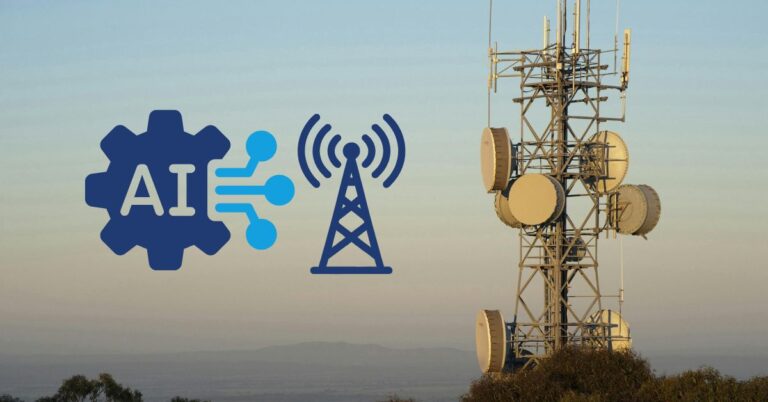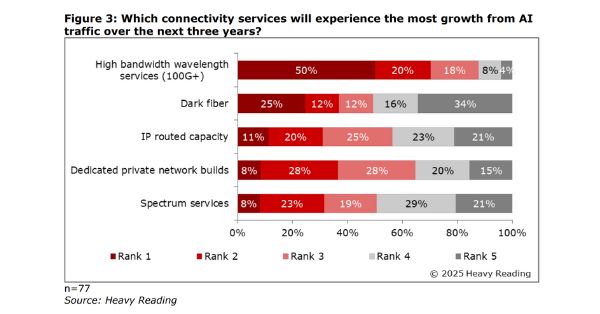In an era where networks are the digital lifelines of enterprises, cities, and economies, the complexity of managing them has reached unprecedented levels. Traditional operational models, reliant on manual interventions and siloed systems, are rapidly becoming obsolete.
To stay competitive and resilient, service providers must move toward truly autonomous networks — intelligent infrastructures that can self-configure, self-optimize, and self-heal. At the heart of this transformation is Artificial Intelligence for IT Operations (AIOps), a technology framework that blends machine learning, predictive analytics, and automation to drive smarter, faster decision-making.
This article explores how AIOps is not just enhancing operational efficiency but fundamentally reshaping the future of network strategy — creating intelligent, resilient, and self-sustaining networks ready for the digital future.
Understanding the Challenges Driving AIOps Adoption in Network Management
The exponential growth of connected devices, bandwidth-heavy applications, and technologies such as 5G and IoT has intensified the strain on traditional network operations centers (NOCs). Managing sprawling infrastructures with manual oversight leads to inefficiencies, longer mean time to repair (MTTR), and an increased risk of human error.
Modern networks now extend across physical, virtual, and cloud-native infrastructures. The rise of multi-cloud environments and edge computing further decentralizes network management, requiring service providers to maintain seamless performance from the core to the edge. Traditional tools and processes, even when digitized, are struggling to provide real-time insights or predictive capabilities essential for modern service delivery.
In this complex landscape, automation alone is insufficient. Networks must become intelligent, adaptive, and predictive, driven by AIOps frameworks that transform operations from reactive firefighting to proactive optimization.
What is AIOps? The Foundation for Autonomous Networks
AIOps — Artificial Intelligence for IT Operations — integrates big data, machine learning, and advanced analytics to enhance and automate IT operations processes. Unlike traditional monitoring systems that react to alarms, AIOps proactively identifies, predicts, and resolves network issues before they impact end users.
Key pillars of AIOps include:
- Data Ingestion: Consolidating telemetry, logs, and service metrics across disparate systems into a unified, real-time operational view.
- Anomaly Detection: Using machine learning to detect deviations from normal operational patterns, even in complex, multi-vendor environments.
- Predictive Maintenance: Forecasting potential failures or degradations to enable preemptive action and avoid costly downtimes.
- Dynamic Optimization: Adjusting network performance parameters automatically based on real-time demand and service priorities.
AIOps ensures that network insights are not just retrospective but forward-looking, helping operators anticipate challenges and opportunities before they arise.
Building Blocks of an Autonomous Network
Creating an autonomous network demands more than just automation; it requires the seamless integration of closed-loop processes and intelligent decision-making.
-
Closed-Loop Automation: Networks must be capable of self-configuration, self-optimization, and self-healing without human intervention. When an anomaly is detected, the system should not only alert but automatically execute corrective actions. Closed-loop automation turns insights into actions with minimal latency, ensuring continuous network performance.
-
Intent-Based Networking (IBN): This paradigm focuses on defining desired outcomes rather than specifying manual configurations. IBN systems use AI to translate high-level business intents into actionable network policies and ensure continuous alignment. By embedding intent into network workflows, service providers achieve greater agility and consistency in service delivery.
-
Dynamic Service Assurance: In real-time environments, networks must validate that services meet performance and SLA requirements. AI-driven dynamic assurance provides end-to-end visibility, detects performance drift, and remediates issues automatically. This proactive approach to assurance is critical for maintaining user experience in highly competitive markets.
These building blocks collectively lay the foundation for networks that can adapt to fluctuating demands, optimize resources, and deliver superior experiences autonomously. The shift from manual operations to intelligent, self-driven networks unlocks new levels of efficiency and competitiveness.
Managing the Full Network Service Lifecycle with AIOps Intelligence
Beyond daily operations, AIOps plays a pivotal role in end-to-end service lifecycle management — from design and provisioning to orchestration and assurance.
- Intent-Based Service Management: Networks dynamically align with business objectives, automatically translating service requests into network configurations and policies.
- Customizable Network Slices: AI-driven orchestration allows the creation of specialized virtual networks, optimized for use cases like ultra-low latency video or highly reliable industrial IoT.
- Real-Time Scalability: Analytics continuously monitor network health and demand, adjusting resource allocations to optimize performance while minimizing waste.
This holistic approach ensures that services are not only delivered faster but also maintained with higher reliability and user satisfaction.
Enhancing Network Assurance and Customer Satisfaction Using AIOps
With proactive analytics and automation, AIOps significantly enhances network assurance and customer experience:
- Proactive Problem Detection: Industry studies have shown that autonomous networks leveraging AIOps can proactively detect and address the majority of network anomalies before they impact end users, significantly enhancing reliability and service continuity.
- Accelerated Root-Cause Analysis: AI-driven root-cause diagnostics have been demonstrated to substantially reduce mean time to repair (MTTR), enabling faster service restoration and minimizing operational disruptions.
- Service Prioritization: Networks intelligently prioritize critical applications during periods of congestion to maintain optimal user experiences, ensuring that key services like video conferencing or real-time collaboration tools remain unaffected.
- Self-Adjusting Behavior: Traffic rerouting, resource reallocation, and performance tuning occur automatically based on real-time conditions, ensuring seamless service even under fluctuating demand.
By embedding intelligence into assurance processes, service providers can proactively manage customer experience and deliver consistently high-quality service outcomes.
Empowering Predictive, Self-Healing Networks with AIOps
AIOps unlocks the next level of operational autonomy:
- Dynamic Resource Management: Machine learning forecasts traffic patterns and dynamically reallocates resources for optimal efficiency, ensuring that network capacity adapts in real-time to shifting demand.
- Self-Healing Infrastructure: Early deployments of self-optimizing networks indicate that a significant portion of operational incidents can now be autonomously remediated. Common examples include restarting failed nodes, rerouting traffic, and adjusting configuration parameters without human intervention.
- Predictive Maintenance: Advanced analytics examine historical and real-time data to predict hardware or software degradations before they escalate into critical failures, reducing unplanned outages and improving overall network reliability.
These capabilities allow networks to evolve from reactive management to fully adaptive, self-sustaining environments, capable of meeting the demands of next-generation services and applications.
Strengthening Network Security with AIOps and Zero Trust Principles
Security must evolve alongside autonomy:
- Real-Time Threat Detection: AI systems identify and isolate suspicious behavior instantly, minimizing breach potential.
- Behavioral Analytics: Machine learning detects anomalous access patterns and enforces stricter security measures automatically, supporting Zero Trust architectures.
Embedding security into AIOps frameworks ensures that networks remain resilient against evolving threats.
Why Service Providers Gain a Competitive Edge with AIOps-Enabled Networks
Deploying autonomous networks powered by AIOps offers a multitude of strategic advantages:
- Faster Service Rollouts: Automated provisioning and real-time analytics reduce deployment timelines from weeks to days, enhancing time-to-market for new offerings. This speed is crucial in a world where customer expectations and technology trends evolve rapidly.
- Reduced OPEX and Manual Errors: Automation significantly lowers operational expenditures by minimizing manual interventions and reducing the likelihood of costly mistakes. Predictable, consistent operations also simplify compliance and regulatory reporting.
- Improved Customer Experience: Proactive issue resolution and optimized service delivery lead to higher network reliability, improved QoS, and increased customer satisfaction. In a competitive marketplace, superior customer experience can be the defining differentiator.
- Operational Scalability: As network demands grow, service providers can scale efficiently without corresponding increases in operational headcount. This scalability ensures that providers can capture new market opportunities without overextending their resources.
- Data-Driven Decision Making: Insights generated through AIOps can inform strategic decisions beyond IT operations, including product development, customer support enhancements, and business expansion planning.
Service providers embracing AIOps-driven autonomy position themselves as agile, customer-centric innovators ready for the demands of 5G, IoT, edge computing, and beyond.
How Ciena is Shaping the Future of Network Autonomy
Ciena has emerged as a leading force in driving the shift toward intelligent, autonomous networks. Recognizing that automation alone is not enough, Ciena is advancing the industry toward infrastructures that can predict, adapt, and optimize in real-time, powered by AI, machine learning, and advanced analytics.
Beyond platforms like Blue Planet® Intelligent Automation and Adaptive IP™ solutions, Ciena continues to innovate with technologies such as the Navigator Network Control Suite™, providing centralized, multi-layer network visualization and optimization. With WaveLogic 6 coherent optics, Ciena addresses the exponential scaling needs of AI-driven traffic, delivering 400G/800G connectivity with efficiency and scalability.
The integration of AI Studio further simplifies machine learning model management and deployment, enabling faster adoption of AI insights across operational workflows. Ciena’s exploration of network digital twins is opening new opportunities for predictive analytics, real-time optimization, and intelligent planning.
Moreover, Ciena’s focus on dynamic, SLA-driven, on-demand wavelength services positions service providers to monetize AI-enabled capabilities more effectively. These innovations, aligned under the Adaptive Network vision, ensure that operators are not only future-proofing their infrastructures but also unlocking new revenue models and operational efficiencies.
Through global collaborations, research initiatives, and active contributions to industry standards, Ciena is shaping a new era of resilient, scalable, and intelligent networks built for the demands of the AI economy.
The Future of Networking: How AIOps is Driving Autonomous Innovation
Autonomous networks are no longer a futuristic concept — they are an immediate necessity in an increasingly complex and competitive digital landscape. AIOps serves as the critical enabler, allowing networks to become intelligent, resilient, and self-optimizing.
The convergence of AIOps and autonomous networking marks a shift from reactive management to proactive, self-sustaining infrastructures. Emerging technologies like natural language interfaces and generative AI troubleshooting will continue to drive operational simplification and efficiency. Service providers who embrace this transformation today will be the architects of tomorrow’s connected world — delivering unparalleled experiences, achieving new operational heights, and future-proofing their digital infrastructure.
The journey toward autonomy demands vision, investment, and a willingness to embrace innovation. Those who lead the charge will define the future of global connectivity.










